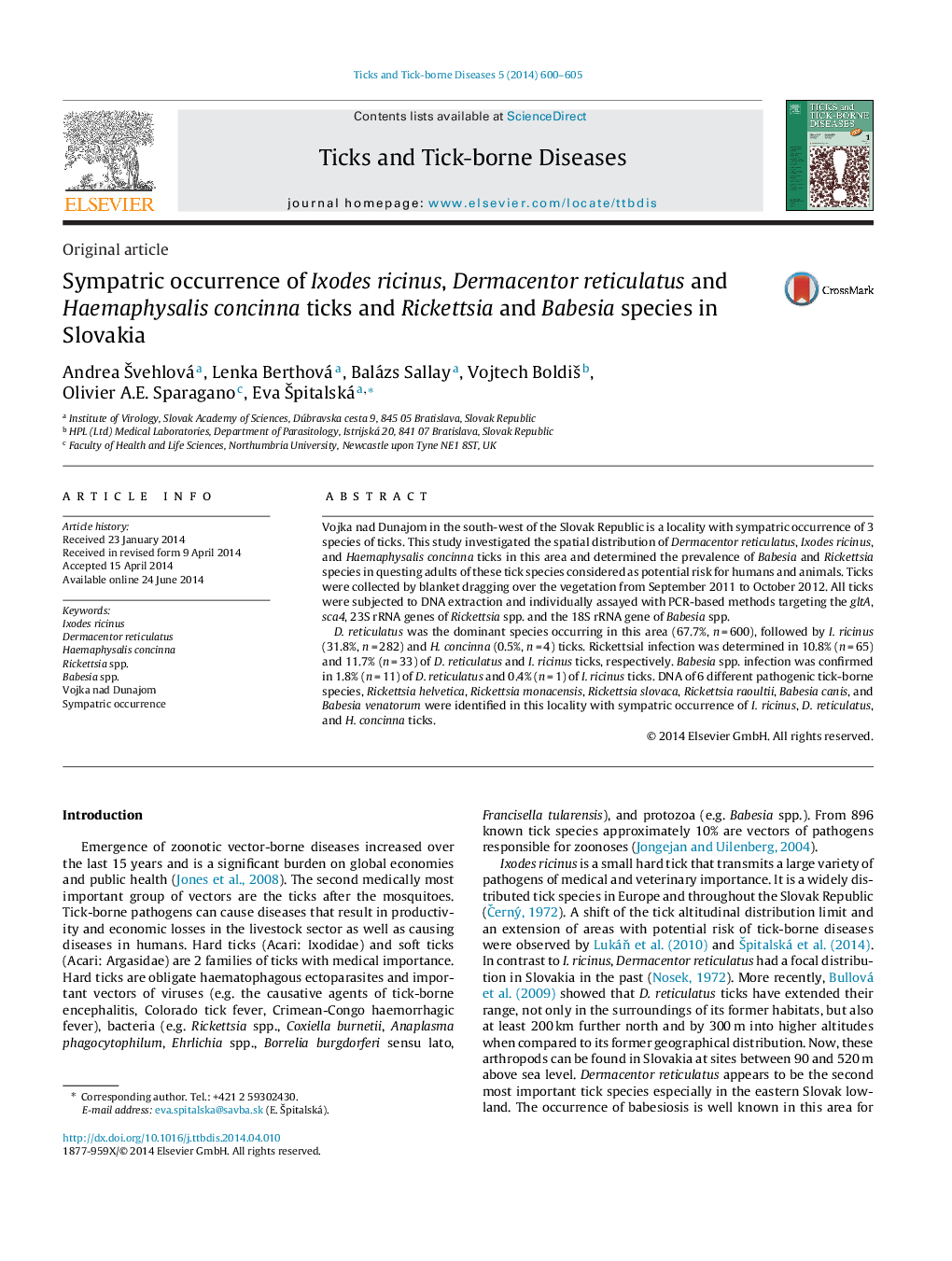| Article ID | Journal | Published Year | Pages | File Type |
|---|---|---|---|---|
| 2474061 | Ticks and Tick-borne Diseases | 2014 | 6 Pages |
Vojka nad Dunajom in the south-west of the Slovak Republic is a locality with sympatric occurrence of 3 species of ticks. This study investigated the spatial distribution of Dermacentor reticulatus, Ixodes ricinus, and Haemaphysalis concinna ticks in this area and determined the prevalence of Babesia and Rickettsia species in questing adults of these tick species considered as potential risk for humans and animals. Ticks were collected by blanket dragging over the vegetation from September 2011 to October 2012. All ticks were subjected to DNA extraction and individually assayed with PCR-based methods targeting the gltA, sca4, 23S rRNA genes of Rickettsia spp. and the 18S rRNA gene of Babesia spp.D. reticulatus was the dominant species occurring in this area (67.7%, n = 600), followed by I. ricinus (31.8%, n = 282) and H. concinna (0.5%, n = 4) ticks. Rickettsial infection was determined in 10.8% (n = 65) and 11.7% (n = 33) of D. reticulatus and I. ricinus ticks, respectively. Babesia spp. infection was confirmed in 1.8% (n = 11) of D. reticulatus and 0.4% (n = 1) of I. ricinus ticks. DNA of 6 different pathogenic tick-borne species, Rickettsia helvetica, Rickettsia monacensis, Rickettsia slovaca, Rickettsia raoultii, Babesia canis, and Babesia venatorum were identified in this locality with sympatric occurrence of I. ricinus, D. reticulatus, and H. concinna ticks.
